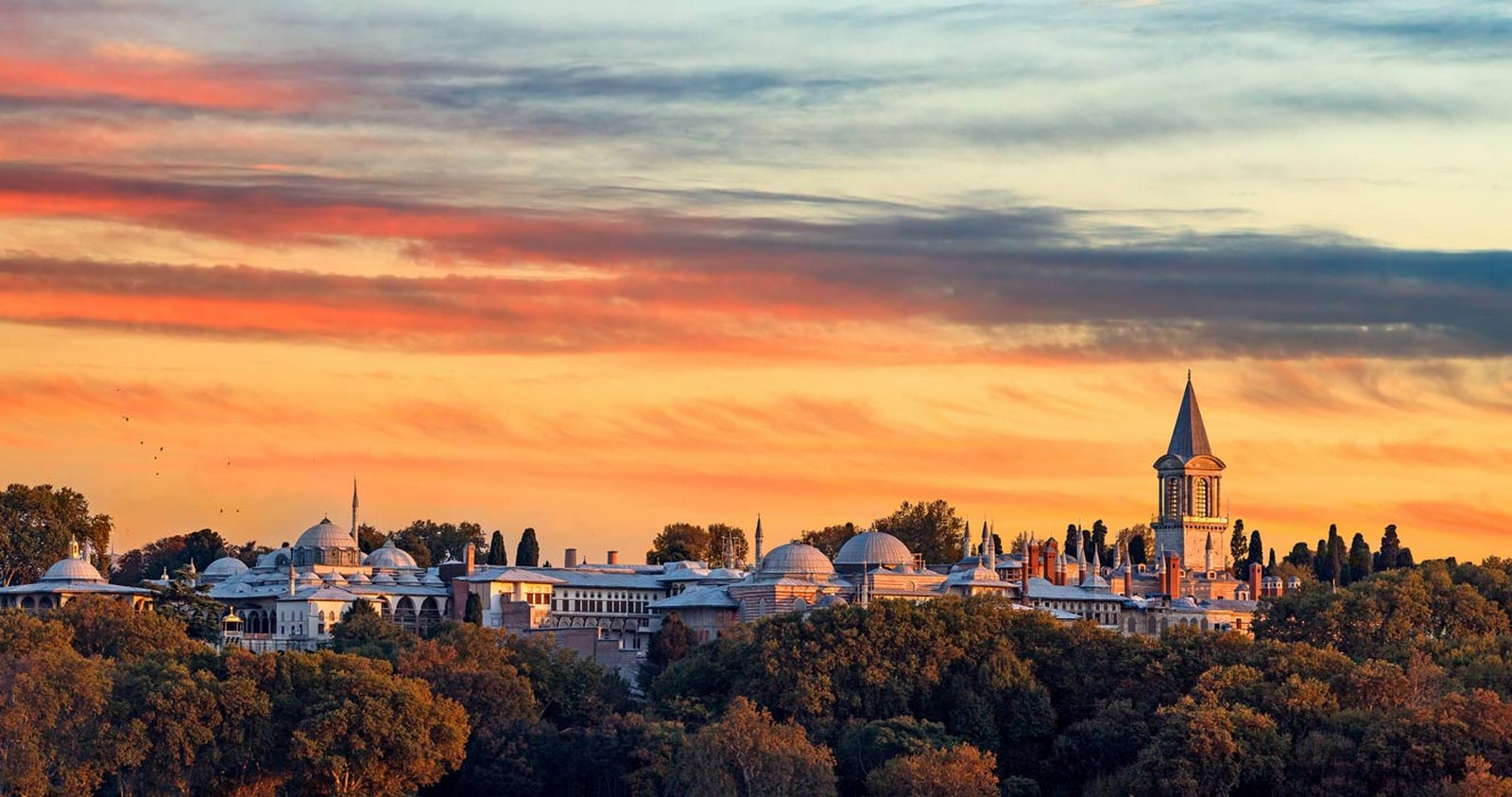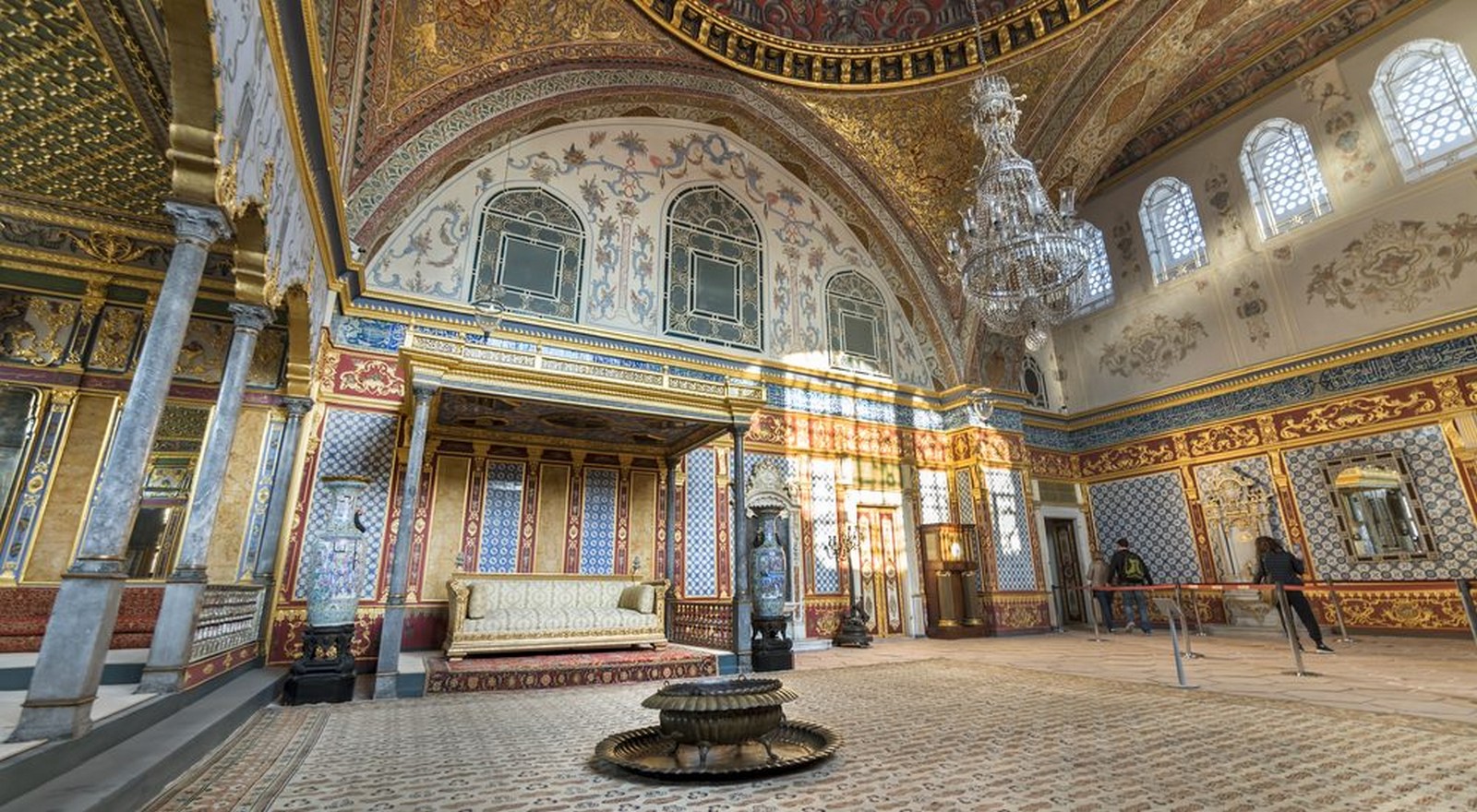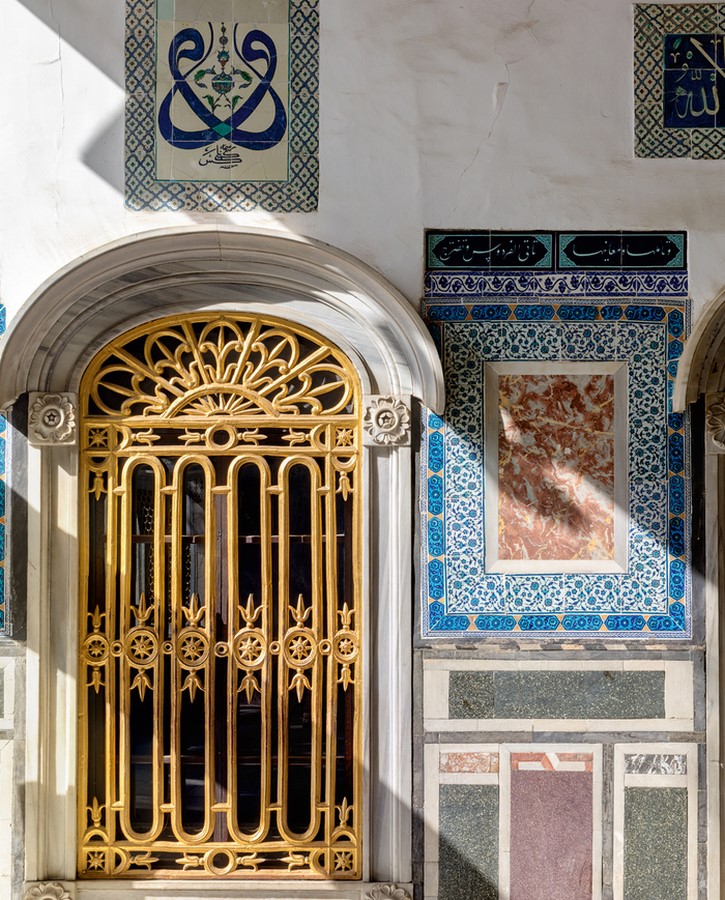What makes Topkapi Palace the number one destination of Istanbul, Turkey? But first, what is Topkapi Palace? The palace has been for four centuries the eyes of the Ottoman dynasty by having witnessed the lavish life of sultans, members of the court, harem, and its numerous services until the 20th century.
Topkapi Palace is a cultural patrimony in Istanbul, Turkey; built on the ruins of the Roman Empire. Topkapi stands for “Cannon Gate” in Turkish, referring to the structural components of the entrance. The palace has been for four centuries the eyes of the Ottoman dynasty by having witnessed the lavish life of sultans, members of the court, harem, and its numerous services until the 20th century when the palace became the eyes of the travelers. In the 20th century, the palace of fantasies and mysteries restructured its purpose by being the pioneering museum in the Republic of Turkey, which led it to become a cultural heritage site. Also, the palace’s location is part of history by being in the heart of the city of Istanbul, where cultural heritages such as the Hagia Sophia, the Blue Mosque, and the Suleymaniye Mosque are also found. As a result, Topkapi Palace is one of the most visited tourist destinations in the province of Istanbul, Turkey due to its strategic location and the importance of its past. Nevertheless, it is time to deal deeper on the intriguing history of the imperial cannons and open the gates to the Palace of Dreams.

During the second half of the 15th century, Sultan Mehmet II conquered Istanbul and became the capital of the Ottoman Empire. Years later, the Sultan was willing to reside in the new land to perform his absolute power and continue with the Ottoman dynasty- later known as the Major Islamic dynasty. Afterward, the Sultan dictated the initiation of the palace’s construction in a strategic territory, where the remains of a Byzantine Palace, also known as the Roman ruins, rested. The construction of the Palace included pre-existing pillars, materials, and architectural elements from the Byzantine palace that it was built on. Therefore, such base became the influence of the new Palace’s architecture and construction practices with the purpose to improve them; with the result of detailed ornamentation, ingenious spatial organization, which started a new period of architecture, the Ottoman. Another source of influence on Topkapi Palace’s design was Edirne Palace Turkey; Edirne was the prior capital of the Ottoman Empire. Ottoman Sultans resided in the Imperial Palace before Istanbul was conquered. Edirne Palace’s architecture and Turkish style inspired the Topkapi Palace’s plans and aesthetics. As a result, the Topkapi Palace produced a moderate style compared to other monuments in the heart of Istanbul. At the same time, it is like the Turkish style monuments, in the sense of its display of diverse vegetation in its four courtyards, and several fountains, representing Heaven on Earth. The role of courtyards in the palace was to create a transition between private to public spaces. The Topkapi Palace’s ruling principles were political control, social order, and religious devotion; in effect, these aspects defined the Palace’s hierarchy and accessibility to any of its four courtyards.
On the other side, Topkapi Palace is introduced by the three monumental gates, and its interior spaces are ornamented with delighting Iznik tiles covering walls and ceilings, part of the extraordinary handcrafted ornamentation proposed by the Sultan Mehmet II. Therefore, numerous areas were purposefully highlighted with luxurious ornaments; for example, the area of the Imperial Councils’ is ornamented in Rococo style; Pavilions and reception areas are embellished with Venetian style mirrors, gold frameworks, and Delftware tiles. All such stylistic decisions were with the purpose to convey power from the Ottoman Empire in its architecture, which later influenced its neighboring monuments such as the Hagia Sophia in its restoration. Ottoman Architects worked to transform Hagia Sophia from a Byzantine cathedral to a mosque. As a result, principles and material techniques applied to the mosque were later in time characteristics of Ottoman architecture. Buildings restoration indicated the Ottoman Empire’s presence in Istanbul, including its religious-cultural practices and the sultan’s power over the public.

The sultans’ absolute power required a social hierarchical system determined by urban development. The Palace’s layout allowed the sultan to control the almost 5,000 residents and facilitated him to address governing issues. Consequently, Topkapi Palace’s layout consisted of four courtyards and each one of them corresponding to a specific group of residents. The outer courtyard was dedicated to the massive public, it was the scenario for ceremonies, artisan’s workshops, religious and cultural events. The Gate of Salutation introduces the second courtyard, which was dedicated to members of the court and guests. Protocols were performed on each of the palace events and ceremonies, these measures secured the sultan’s safety. For example, visitors willing to communicate a message to the sultan had to speak with the sultan’s translator first; then, the information was communicated to the sultan. The reason is that direct communication with the sultan was not allowed and communication protocols had to be performed with guests. However, this courtyard is principally known as the Empire’s administrative center where members discussed political affairs and administration strategies. Therefore, the second and third courtyards are the most representative spaces in the palace, both served the Ottoman’s Empire; one of them as the administration center, and the other as the Royal residence. The Innermost courtyard or the Harem is where the sultan, women in training, and their descendants resided. The Harem or third courtyard was the most prestigious space in Topkapi Palace, it kept secret the Royal family’s lives; in such a way that the Harem accepted only selected servants. Foreign ladies were treated as slaves and presented as prestigious gifts to the sultan. Then, when a woman was accepted in the harem, it meant to be educated to contribute to the Empire’s economics and trained as a concubine or one of the sultan’s wives. The third courtyard’s architecture focused on housing, education, and gathering space for the Royals family. Finally, the fourth courtyard displays Topkapi Palace’s most picturesque flowering gardens and pavilions, this courtyard was the place for assistance services, circumcision ceremonies performed to the sultan’s sons, and eventually, it was the sultan’s gathering space. As can be seen, the Imperial Palace’s courtyard performed events and ceremonies followed by Islamic principles and the sultan’s authority.

The majestic construction remained to serve the capital of the empire as the essential administration and training facility for the Ottoman’s dynasty until the 19th century. In 1922, the Ottoman Empire eradicated its kingdom after four centuries. Mustafa Kemal Atatürk, known as a founding President of The Republic of Turkey, contributed a genuine adjustment to the renowned palace into a museum in memory of the Ottoman Empire. Before this date, the palace had restrictive accessibility of external people and its luxuries remained within its walls. Sixty-three years after its opening, the site has been recognized as one of the World Heritage Sites by UNESCO -the United Nations, Education, Scientific, and Cultural Organization. From then, the marvelous monument has been part of the Historic Peninsula of Istanbul preserved over the years. Also, its importance remains for its authentic treasures designed in distinctive eras, preserved relics, and prominent records from the neoclassical Enderûn Library, such as manuscripts from the founder of Islam, Muhammad. Ultimately, the Palace of Dream recalls the Ottomans Empire, and its symbolic treasures are shown in every simple aspect of its architecture.
Topkapi Palace is a representation of Heaven on Earth, its architecture shows the history of an Empire and its mysteries. The Palace of Dreams emerged from Ancient ruins transitioned to the Major Islamic dynasty in history. For centuries, the secrets from the Major Islamic dynasty have remained in its ornamented halls and flowered gardens. The Ottoman Empire remained until it was abolished, in the 20th century. Subsequently, the father of the Republic of Istanbul, Mustafa Kemal Atatürk, transformed it into a museum; finally, Topkapi Palace was considered a cultural patrimony in Istanbul’s Historic Area. The last century was a century full of symbolic changes in Turkey, and one of them was when the Topkapi Palace’s monumental Gates opened to travelers and the eyes of the World. Since then, travelers have witnessed the Topkapi Palace’s wonders, the Ottoman Empire’s s luxuries, and mysteries.
Sources
- An exclusive look inside Istanbul’s Topkapi Palace. Architectural Digest. Retrieved July 9th, 2020. https://www.admiddleeast.com/architecture-interiors/homes/istanbuls-topkapi-palace-is-a-citadel-of-astounding-luxury
- Historical and Architectural Features of Topkapı Palace. Legacy Ottoman Hotel, Retrieved July 9th, 2020, from https://blog.legacyottomanhotel.com/en/2019/01/05/topkapi-sarayinin-tarihi-ve-mimari-ozellikleri/
- Historic Areas of Istanbul. United Nations Educational, Scientific, and Cultural Organization. Retrieved July 9th, 2020. https://whc.unesco.org/en/list/356/
- Private and Royal Life in the Ottoman Palace. Ilber Ortayli. Retrieved July 9th, 2020. https://www.google.com/books/edition/_/6CRRCwAAQBAJ?hl=en&gbpv=1&pg=PP1&dq=structures-+Topkapi+Palace,+Istanbul,+Turkey
- Proceeding, 11th International Space Syntax Symposium. Retrieved July 10th, 2020. file:///C:/Users/andre/Downloads/TOPKAPI_PALACE_Reflections_on_Social_and.pdf
- Topkapi – A Palace of Dreams and Tears from the Ottoman Empire. Ancient Origins, Reconstructing the Story of Humanity’s Past. Retrieved July 9th, 2020. https://www.ancient-origins.net/ancient-places-asia/topkapi-palace-dreams-and-tears-ottoman-empire-005878
- Topkapı Palace Museum. Encyclopedia Britannica. Retrieved July 11th, 2020. https://www.britannica.com/topic/Topkapi-Palace-Museum/Third-courtyard
- Topkapi Palace: the seat of an empire. Property Turkey. Retrieved July 11th, 2020. https://www.propertyturkey.com/blog-turkey/topkapi-palace-seat-of-an-empire













